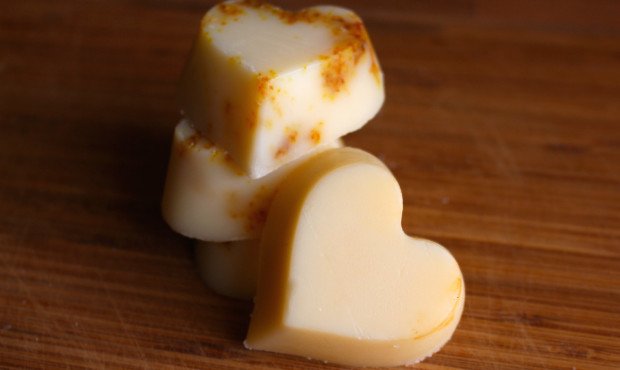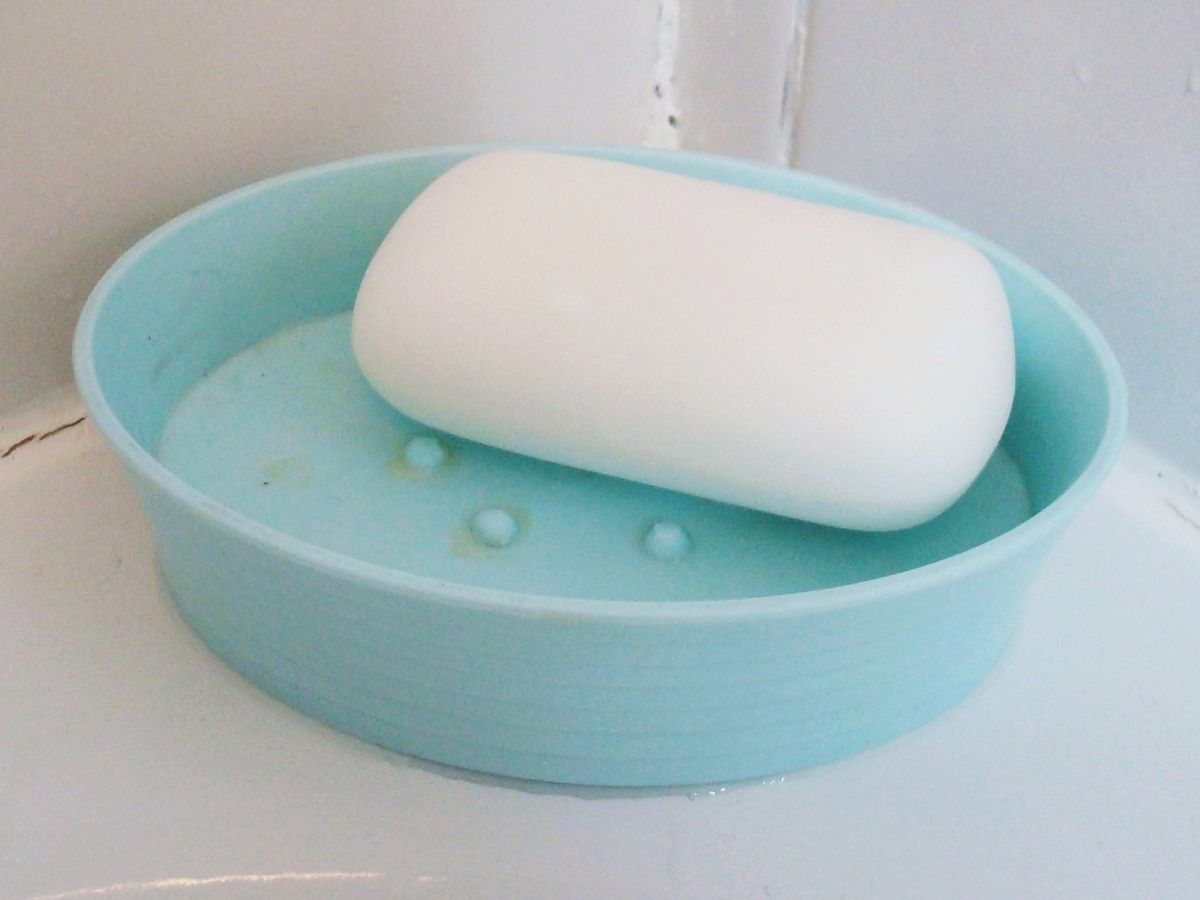Homemade Soap From Scratch
Homemade soap making doesn’t have to be complicated. Several years ago, when I first began venturing into the world of soap-making, I was {admittedly} pretty overwhelmed but after a couple batches, I found that it wasn’t so difficult after all. This is my recipe for simple, 3 ingredient cold process soap.
Today, I’ve whittled it down for ease and accessibility for you to be able to successfully make your very own soaps at home. It’s fun, easy, and saves you money. Additionally for me, completing practical DIY’s like this that have day to day use is not only functional but highly therapeutic. There’s a great satisfaction that I garner from watching simple ingredients transform into a whole product. The process of gathering and pouring, waiting and watching helps me slow down and funnel my energies into a fun and productive project that I’ll get so much use out of later {like my homemade lip balms and candles}. The best parts? I know exactly what went into it and can share the bounty with my loved ones.

- 6 oz oil* {I used a combo of coconut/olive oils}
- 1.93 oz distilled/purified water
- .76 oz lye {100% sodium hydroxide}
- Optional: add-ins of your choice
- Properly weigh out all three ingredients.
- Standing back, pour the lye into the water {never the other way around!!} and stir until it gets clear and set aside. It will fume/heat up so don’t breathe it in and make sure you’re in a well ventilated area.
- Heat your oil/s in a separate bowl. I used a microwave and heated in short bursts just until the coconut oil melted Using a digital thermometer allow both your oil and water/lye to be at 110*
- Pour the lye/water into the oil/s.
- Stir/blend by hand for the first 5-10 minutes. You can then switch over to an immersion blender if you’d like. It’s ready when it’s thickened and homogeneous. It should resemble loose pudding or pale egg yolks.
- Stir in your desired add-ins.
- Pour into molds. Wrap in plastic and cover with a towel to rest in a dark/undisturbed place of 1-2 days.
- It’s ready to turn out onto baking racks when the soaps are firm. It’s important to allow the air to circulate on every side which is why a baking rack is helpful here.
- Allow your soaps to dry/cure on the rack for 5 weeks before using.
- Keep them individually wrapped in an airtight container.
As for add-ins: natural colors like cocoa powder/cinnamon, turmeric or beet root and essential oils, pressed herbs/flowers, oatmeal, sea salt, coffee grinds..the options are endless!
Notes:
- There are no substitutions for lye aka 100% sodium hydroxide. If you’re interested in a short cut approach, melt and pour soaps are another option but you won’t be producing soap from scratch and still, the base of all soaps is lye. I source mine online here: http://amzn.to/1NqBIb5 or from my local hardware store.
- Be careful. Lye is caustic. You can always use googles and gloves if you’d like. Always make sure to make soap in a well ventilated area/outside/next to an open window and never breathe it in. You can also cover your work area with craft/butcher paper/newspaper. Keeping vinegar handy with help counteract the lye if you do get some on you. Afterwards, wash your hands and arms.
- After saponification, meaning the lye has reacted with your oils, you don’t have to worry about the lye.
- Use dedicated materials. I use tempered glass, wood, and silicone molds {there’s debate on this but this is what’s always worked for me}. Invest in a digital thermometer and digital scale.
- Add-in’s can range from herbs and essential oils to beet powder and turmeric for color or milk and honey as skin softeners. The options are endless.
- The most important factors to successfully producing soap: properly weigh your materials, allow both oil and lye to register at 110*, and blend them together until they’re at the “trace” stage meaning the mixture looks creamy and thick.
Happy soap making!
Love,
Your Squishy Monster
‹ Healthy Breakfast Cookies Dark Chocolate Almond Florentines – Lacey Cookies ›



I’ve always thought about making soap but that’s as far as I’ve gotten. You make it sound almost easy.
so cool!!!
I’ve always been scared to make this, but you make it look so darn easy. I think I may have to try this one day.
Kay of Pure & Complex
http://www.purecomplex.com
it looked like white chocolate so i got hungry when u made it! hahaha can u use glycerin instead of lye so not have to worry about burns?
I’ve never made homemade soap before but have always wanted to! Looks so cool and I love the pretty heart shape
Agree with Maureen, you make soap making sounds so easy and doable, will try one of these days.
Hi, Brain! That’s a great question. There are glycerin bases {that still contain lye} that you can certainly purchase but this would be a melt-pour soap vs cold process soap from scratch. It’s much easier and safer so definitely an option.
Easiest soap recipe ever seen I believe and love the fact that you find it therapeutic to make. Zen is good…with lavender essential oil too added perhaps
Ahhh!! What a great idea!! I love this! So creative!!
WHOA!!! SO cool!
That a very easy recipe. thanks for sharing. I have been using home made stuff for the longest, the best.
Never thought it was this easy to make soap! Thank you, Angela!!
Julie & Alesah
Gourmet Getaways xx
Angie, you are a genius ,this s so easy and makes such a great gift.
These look wonderful Angie!
thanks Squishy.
WOAH! This is awesome, pretty darn easy and …. excellent as gifts too. I reckon I might give soap making a whirl.
before I rate your vidro, can you please put how many percent of each oil you used. Thank you!
Hi, Corrs! In my recipe is calls for 6 oz. Since I used a combo, I used half and half meaning 3 oz coconut and 3 oz of olive oil =)
can you add goats milk to this recipe or would I have to change out one of the oils or water.
Hi, Jen. This particular recipe will not work with milk and can’t be substituted out. I can certainly add a milk-based one for later to my list =)
how do I make a bigger quantity?
Hi, Mohamed. You can easily double/triple/etc this recipe =)
could i use only coconut oil?
Hi, Eve! I’m not sure I understand your question.
This looks so easy to make! Thanks for sharing! How much of the essential oil can to add to this recipe or any of the add-ins.